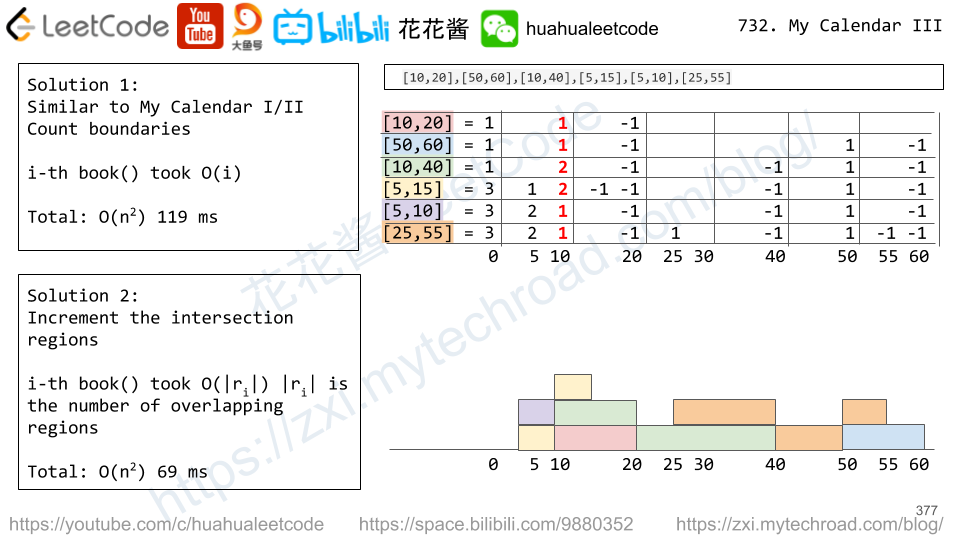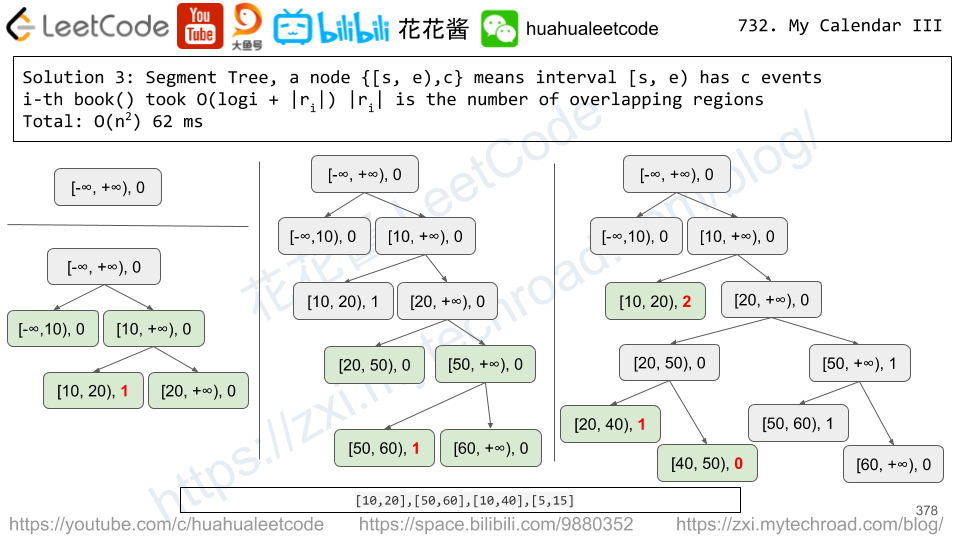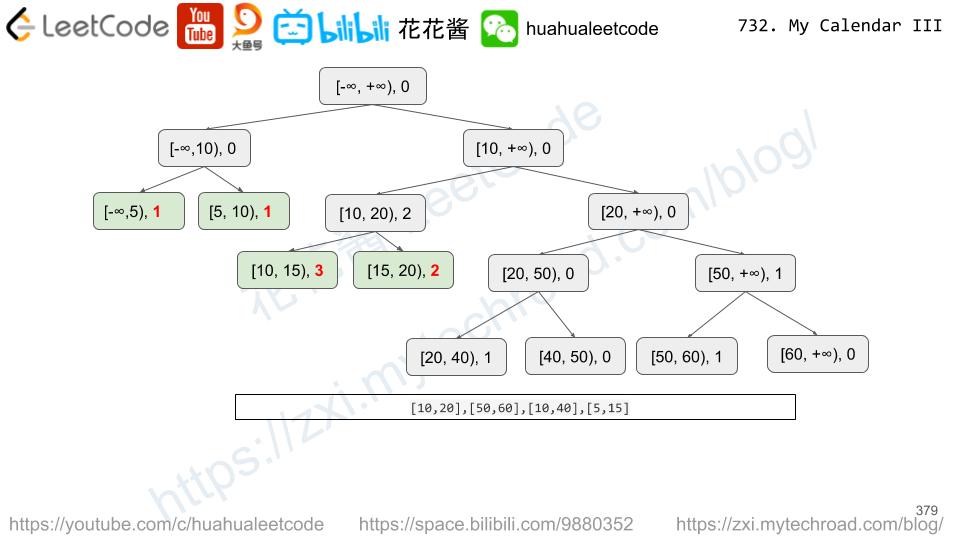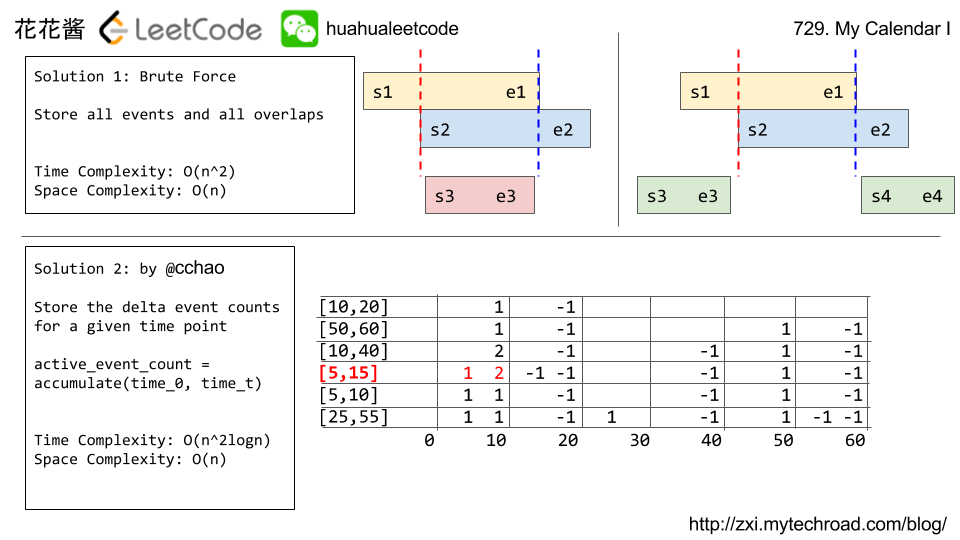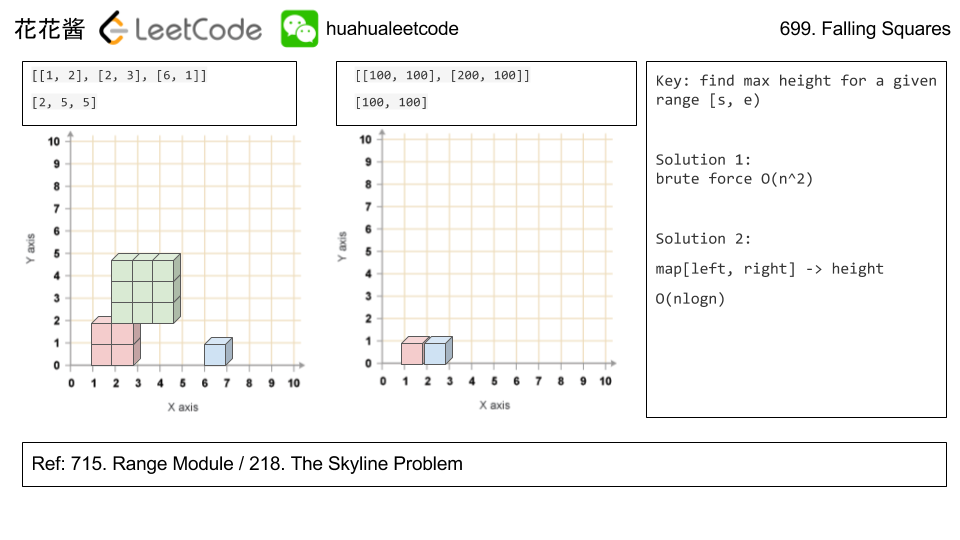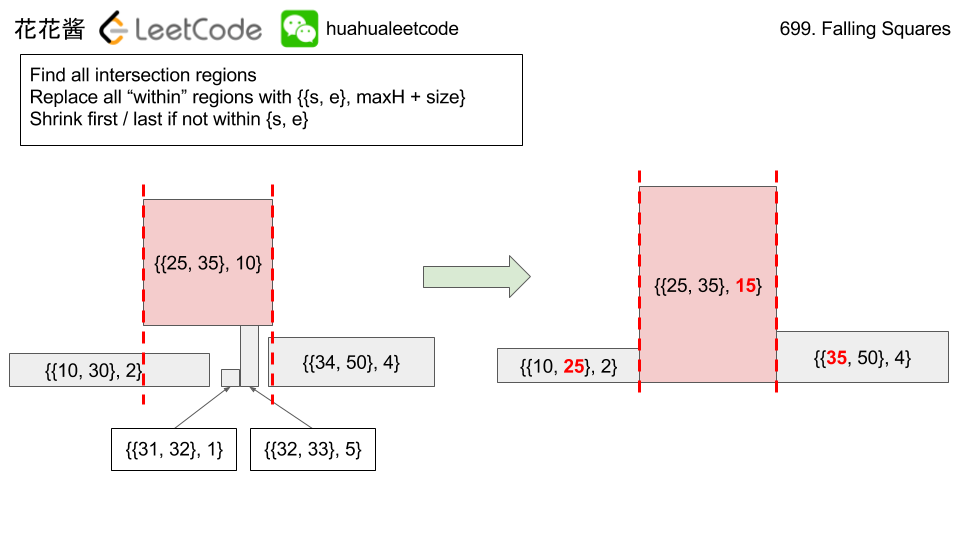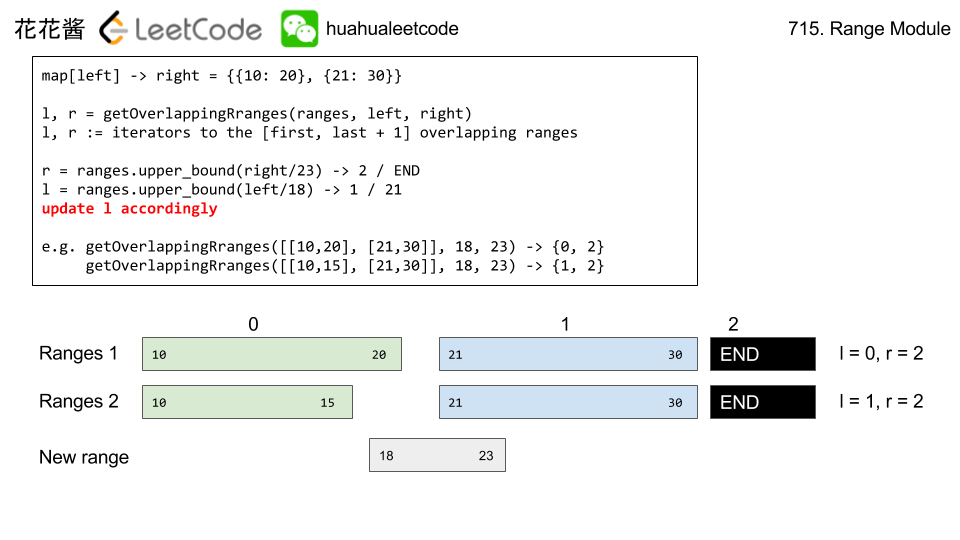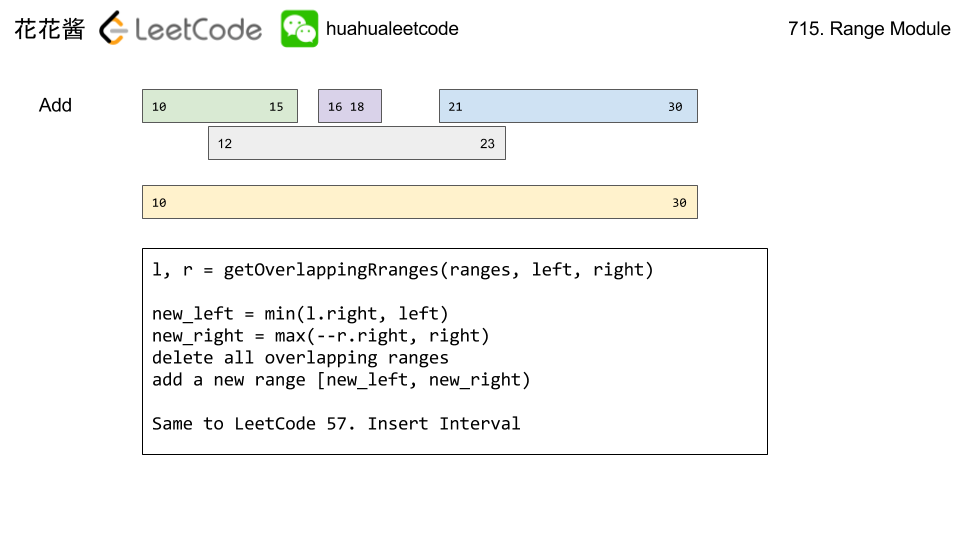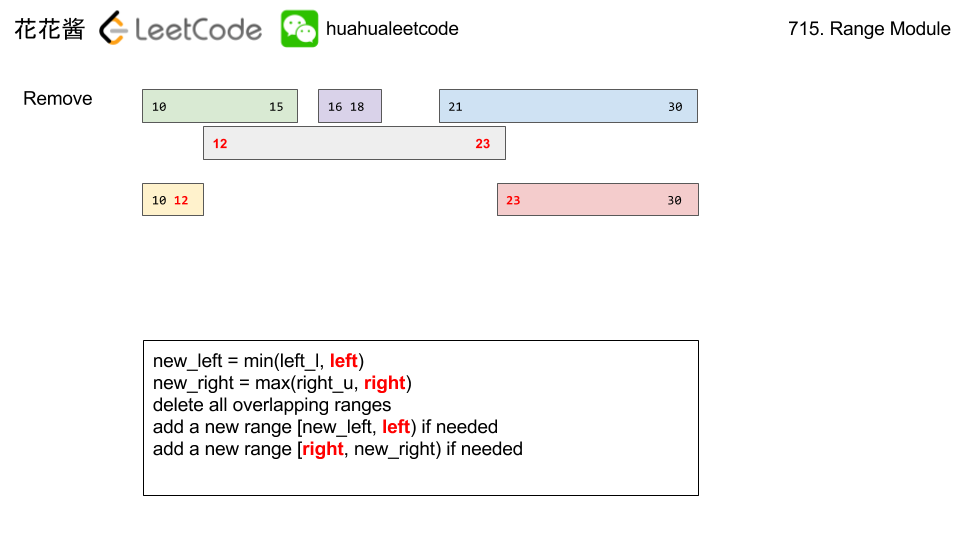题目大意:给你每个员工的日历,让你找出所有员工都有空的时间段。
Problem:
We are given a list schedule of employees, which represents the working time for each employee.
Each employee has a list of non-overlapping Intervals, and these intervals are in sorted order.
Return the list of finite intervals representing common, positive-length free time for all employees, also in sorted order.
Example 1:
|
1 2 3 4 5 6 |
Input: schedule = [[[1,2],[5,6]],[[1,3]],[[4,10]]] Output: [[3,4]] Explanation: There are a total of three employees, and all common free time intervals would be [-inf, 1], [3, 4], [10, inf]. We discard any intervals that contain inf as they aren't finite. |
Example 2:
|
1 2 |
Input: schedule = [[[1,3],[6,7]],[[2,4]],[[2,5],[9,12]]] Output: [[5,6],[7,9]] |
(Even though we are representing Intervals in the form [x, y], the objects inside are Intervals, not lists or arrays. For example, schedule[0][0].start = 1, schedule[0][0].end = 2, and schedule[0][0][0] is not defined.)
Also, we wouldn’t include intervals like [5, 5] in our answer, as they have zero length.
Note:
scheduleandschedule[i]are lists with lengths in range[1, 50].0 <= schedule[i].start < schedule[i].end <= 10^8.
Idea:
Merge Intervals (virtually)
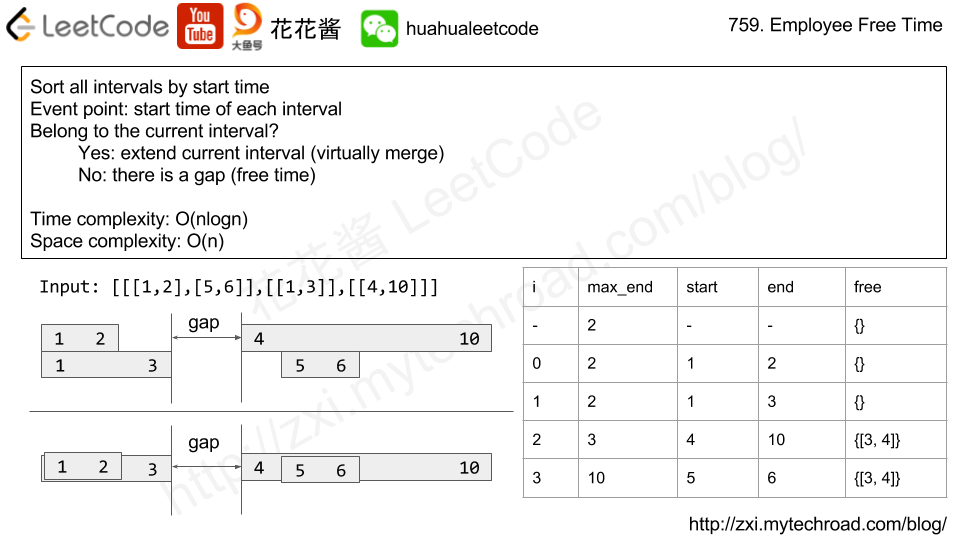
Solution:
C++
Time complexity: O(nlogn)
Space complexity: O(n)
n is the total number of intervals, n <= 2500
|
1 2 3 4 5 6 7 8 9 10 11 12 13 14 15 16 17 18 19 20 21 22 |
// Author: Huahua // Running time: 81 ms class Solution { public: vector<Interval> employeeFreeTime(vector<vector<Interval>>& schedule) { vector<Interval> all; for (const auto intervals : schedule) all.insert(all.end(), intervals.begin(), intervals.end()); std::sort(all.begin(), all.end(), [](const Interval& a, const Interval& b){ return a.start < b.start; }); vector<Interval> ans; int end = all.front().end; for (const Interval& busy : all) { if (busy.start > end) ans.emplace_back(end, busy.start); end = max(end, busy.end); } return ans; } }; |
Related Problems:
